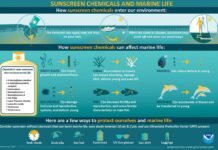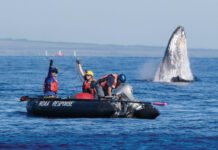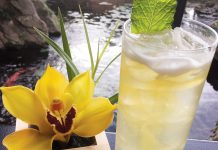The Soil Is Not Toxic
This is a tough topic, perfectly tailored to public-forum yelling matches. Nobody likes living downwind of a farm, and Hawaiian Commercial & Sugar is the biggest farm Maui will ever see. But the inflammatory rhetoric on social media generally fails to mention this: In Hawai‘i, a century of experimentation resulted in pest-resistant cane varieties and the introduction of natural biocontrols — not GMOs, but field-hardy strains, and natural predators carefully introduced to the Islands to thwart small pests. These cut the need for chemical interventions. As Greg Heyd of Brewer Environmental Industries, the company that provided the farm’s supplements, says, “With HC&S, there were no insecticides, fungicides, nematicides — not like pineapple.”
Retired agricultural consultant Bill Pyle worked at HC&S for ten years. He helped transform the farm’s water efficiency by introducing drip irrigation. Pyle is buoyantly enthusiastic about the plantation’s long history of ingenuity.
“I get pissed off when people blow smoke about HC&S.” He cites two environmental-group studies, one of mill mud, the other of cane smoke. “They found nothing. We never sprayed any pesticide.” Then he corrects himself. “Oh, just before harvest we used a mild herbicide to ‘sting’ the plants so that they made more sugar.”
Also, “We did use fertilizer, because the soil needed nitrogen, phosphorus, and potassium [primary ingredients in all fertilizers]. The soils here are geologically sterile.” He means that Maui’s volcanic dirt hasn’t existed long enough to develop much tilth. “So we would dribble [the nutrients] in the irrigation system. It doesn’t accumulate in the soil — though I wish it did.”
Pyle also recalls working with the Soil Conservation Service, an agency of the U.S. Department of Agriculture, to develop runoff-control ditches. “We resurveyed and recut those diversion ditches after every harvest. How many other farmers on Maui are doing this?”
He’s growing some stands of cane in his yard, specimens of the original Hawaiian varieties that were staples of the diet before Western contact. “HC&S has been trying for twenty years to find an alternative crop. If they can’t come up with one, why on earth do the organic farmers think they can do it?”
Those willing to prove Pyle wrong can take comfort in this comment from soil scientist and agronomist Mauricio Avila, who has worked extensively in Hawai‘i: “Organic certification only requires three years free of any products not certified organic. The soil has great capacity to decompose most chemicals used in agriculture.” In other words, cane soil can be converted to organic farming practices.






I want to retain some of the old Hawaii. Sorry to see the sugar cane go away, looked forward to seeing the stacks smoking and sugar cane blowing in the wind. Too much development of too many units robs Hawaii of what makes Hawaii. The Island feel of things past and a people that ruled these Islands and kept them beautiful and treated it with respect. Over fishing, polluting the oceans with plastic and garbage, most people just don’t care, it’s very sad. Pineapple goes, sugar cane goes and soon Hawaii, Maui, will not be the beautiful Island it once was.
HC&S will most likely go with selling the cane fields to wealthy land developers who will ruin the central valley and Northshore by putting new housing developments all over the area! (farming…? For real…?)
The once quaint and quiet Northshore will have a highway put in to replace Hana Highway so that all the malahini can get to their “gated communities!” Maui County better pass some land development restrictions NOW, before big money corrupts the outcome of Maui’s precious resources and limited infrastructure…
What would you rather have, the cane fields and the occasional “Hawaiian snow” or tons of mainlanders swooping in to buy their new vacation homes in a gated community near you…?